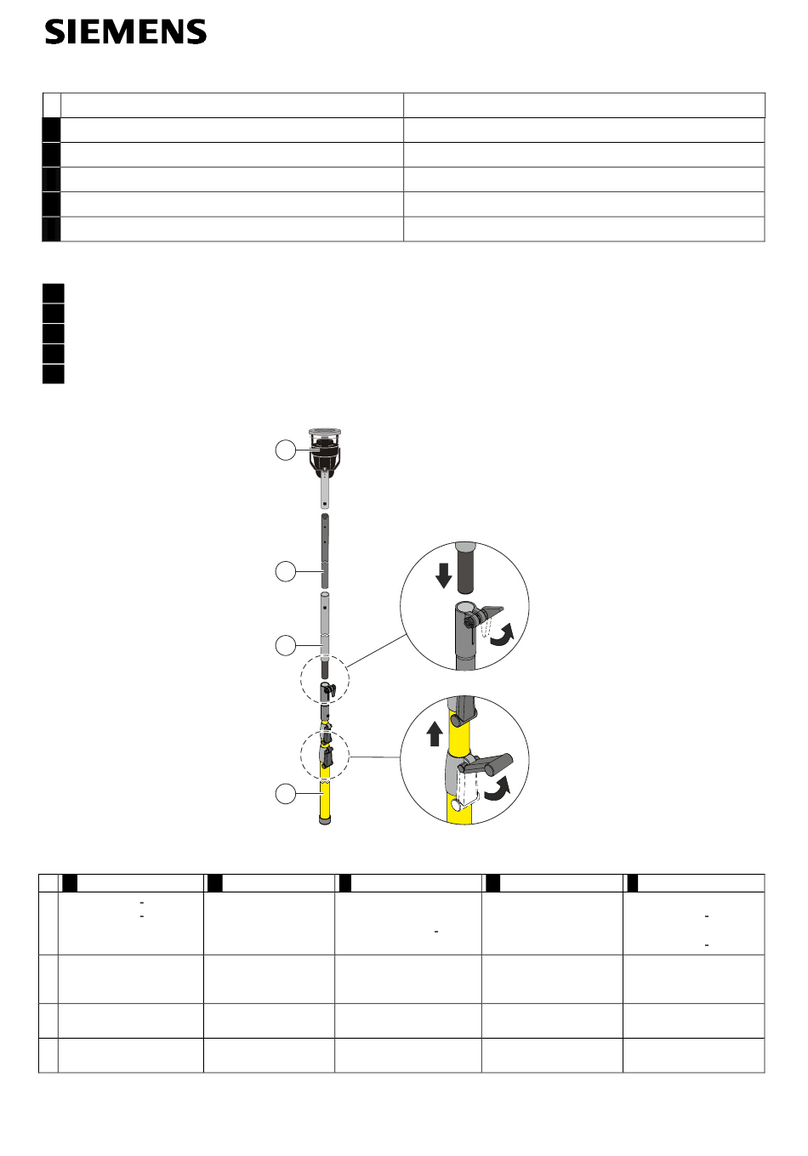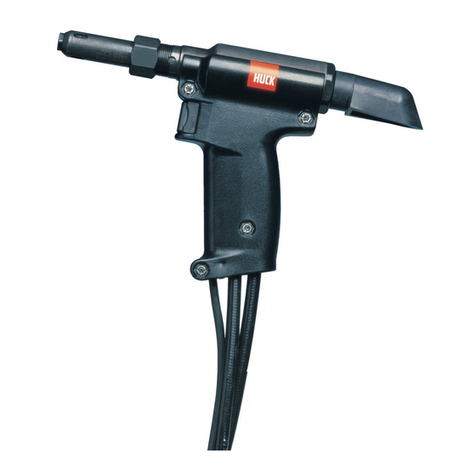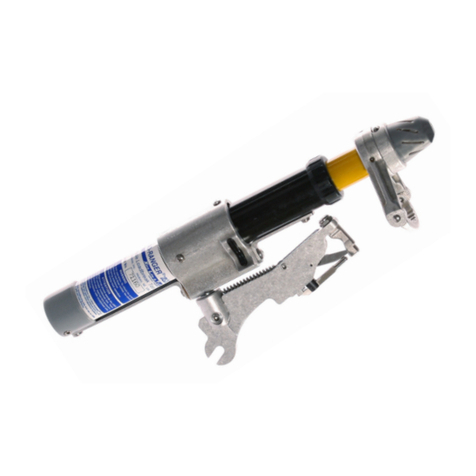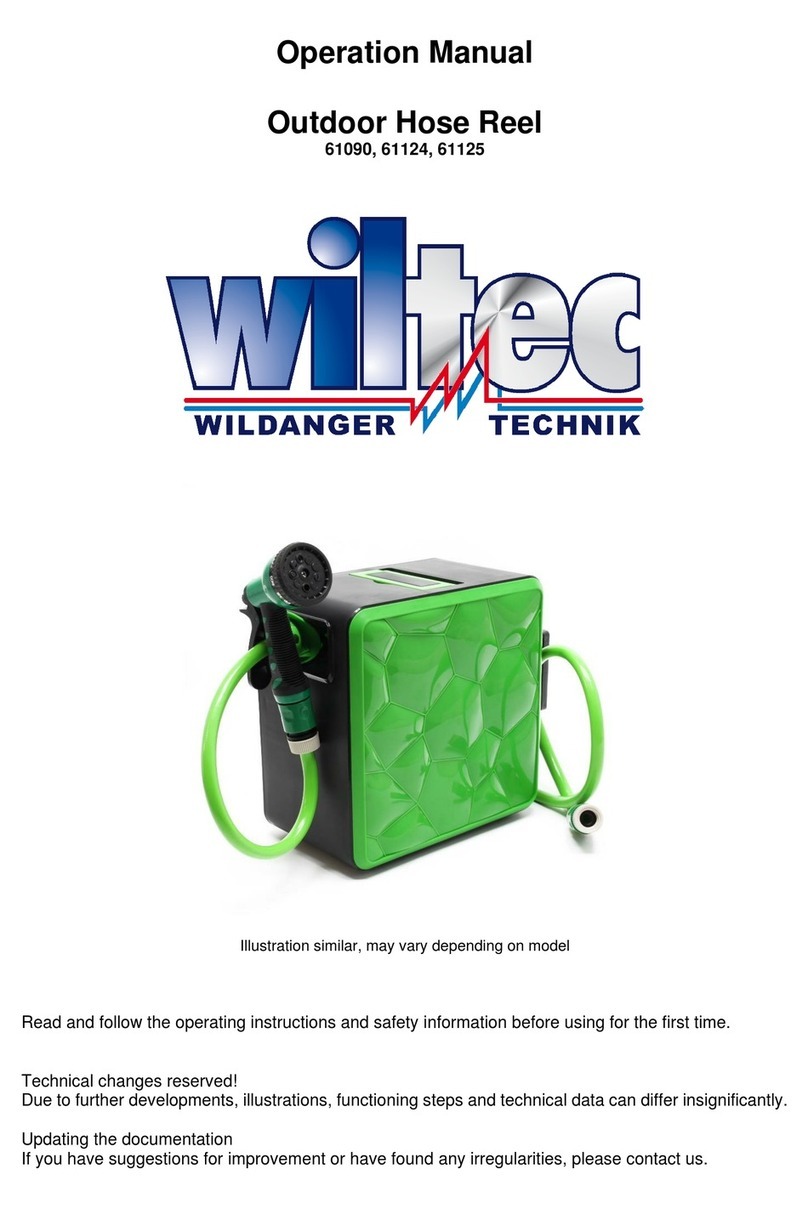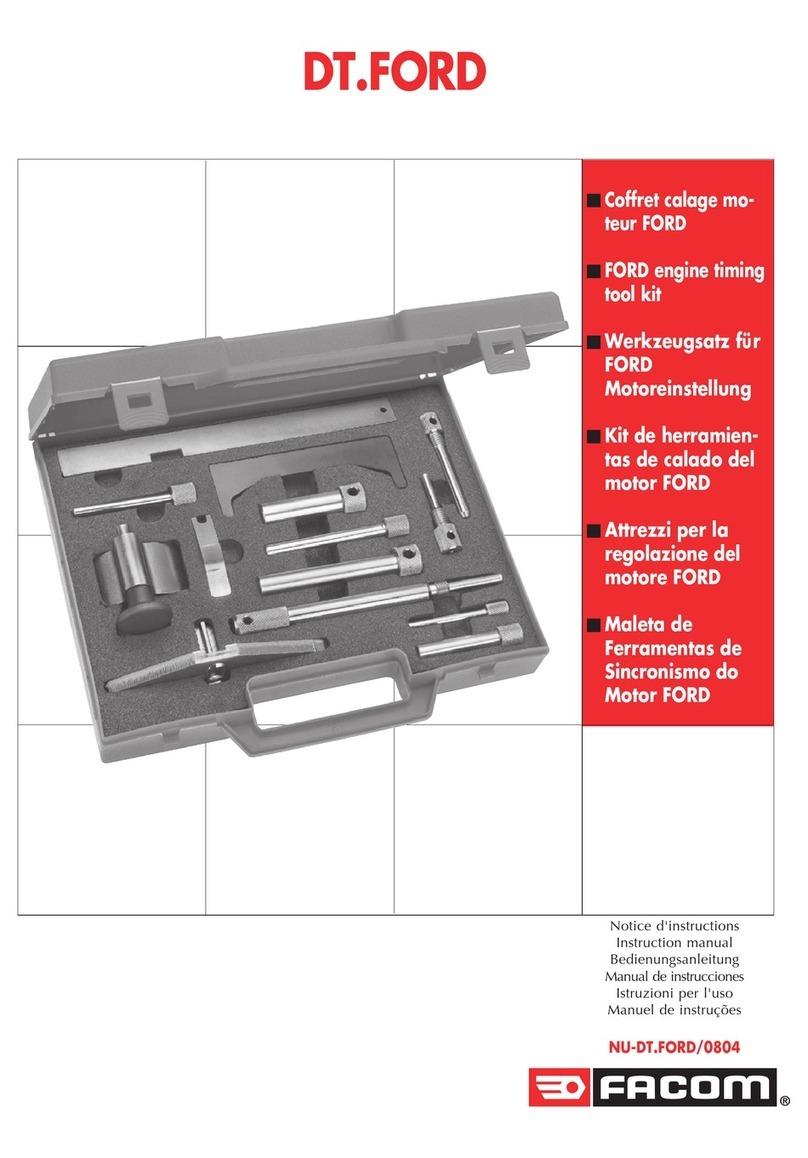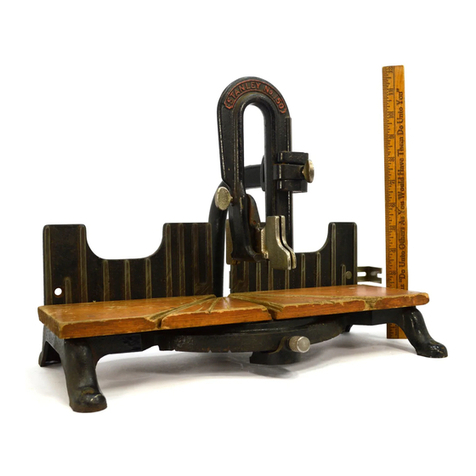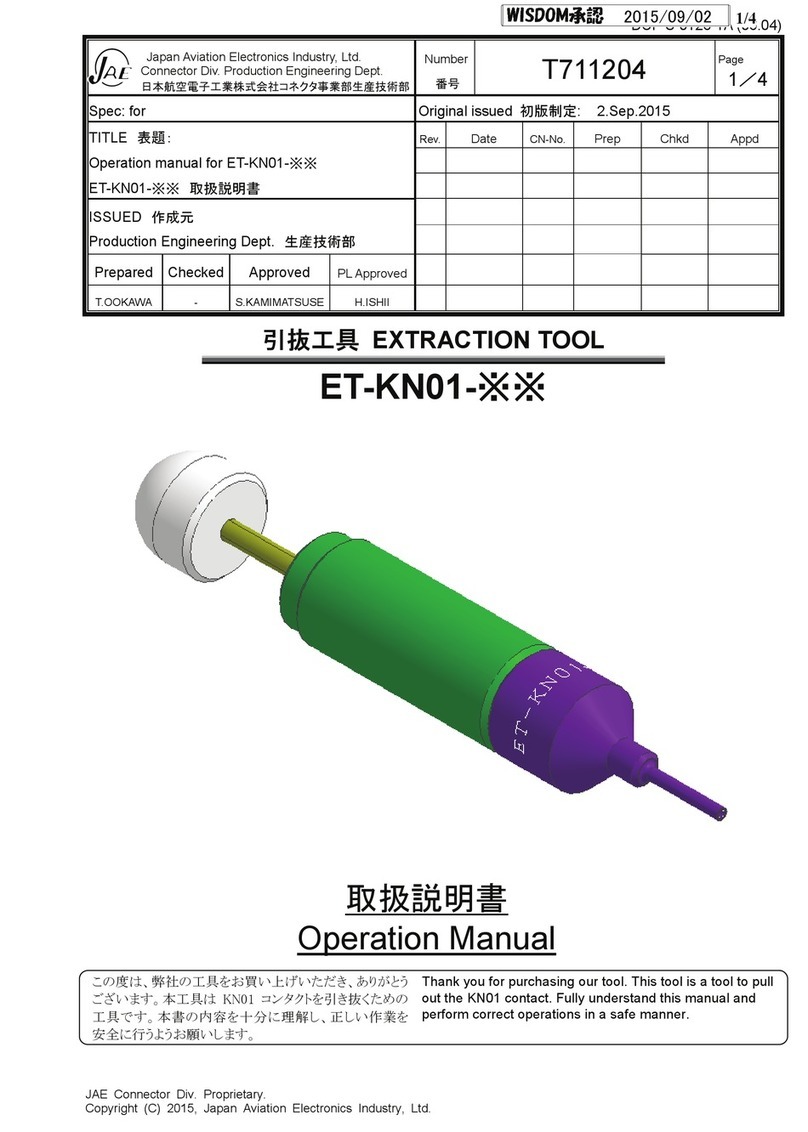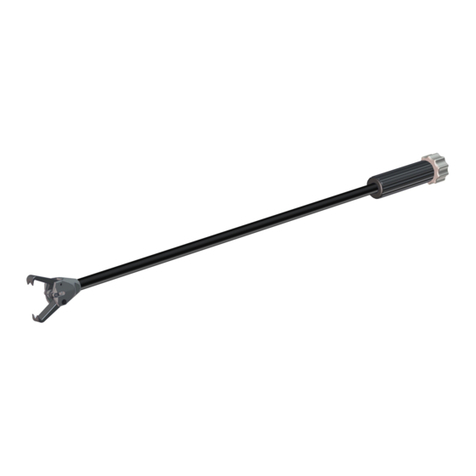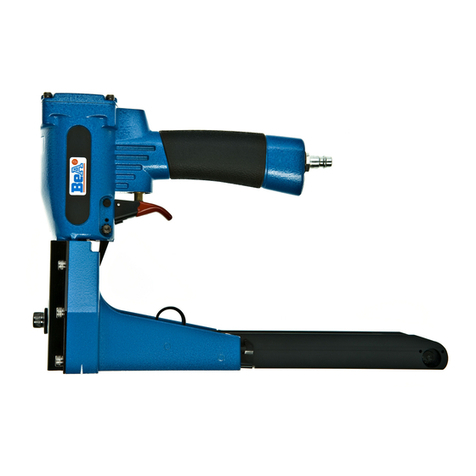Trelawny VL203Ex Troubleshooting guide

1
735.3002X
ATEX Certied VL203Ex Needle Scaler Operation and Maintenance
ATEX CERTIFIED VL203Ex CHALLENGER NEEDLE SCALER
Operation & Maintenance

735.3002X
2ATEX Certied VL203Ex Needle Scaler Operation and Maintenance
CONTENTS
Introduction 2
Declaration of Conformity 3
Operation 5
Maintenance 7
Exploded View
10
Parts List 11
Technical Specications 13
INTRODUCTION
Your new Telawny SPT power tool will more than satisfy your expectations. It has been manufactured under
stringent Trelawny SPT Quality Standards to meet superior performance criteria. You will nd your new tool
easy and safe to operate, and, with proper care, it will give you many years of dependable service.
WARNING
Carefully read through these original instructions before using your new TRELAWNY power tool
Take special care to read the warnings. Your TRELAWNY power tool has many features that will
make your job faster and easier. Safety, performance, and dependability have been given top
priority in the development of this tool, making
it easy to maintain and operate.
DISPOSAL
Do not dispose of electrical products together with household waste!
Waste electrical products should not be disposed of with household waste. Please recycle where
facilities exist. Check with your local authority or retailer for recycling advice.
ENVIRONMENTAL PROTECTION
The machine, accessories and packaging should be sorted for environmental-friendly recycling.
The plastic components are labelled for categorised recycling.


Part Number 733.3003X issue (1)
Appendix 1 - Hazardous Area Certification
The VL203/223 & VL303 Needle Scalers are certified compliant to the ATEX Directive (2014/34/EU)
for safe use within a hazardous area and has been assessed so by TRaC (Notified Body 0891).
This product conforms to the Standards:
EN 13463-1:2009
EN 13463-5:2011
EN ISO 4414:2010
and is attributed with the product certification codes:
II 2 G c IIA T4
ATEX Certificate Number: TRAC15ATEX0029X
Special Conditions of Safe Use
1. Air compressors used in conjunction with these Needle Scalers shall incorporate means to
prevent the ingress of dust or other foreign material into the air supply i.e. a filter on the
compressor intake.
2. For air compressors used in conjunction with these Needle Scalers, only lubricants that are
resistant to carbonisation are to be used
3. Equipment is to be operated at a maximum of 6.9bar (100p.s.i). Equipment must not be
operated below 5.5bar (80p.s.i).
4. The external painted surfaces of the equipment are not to be exposed to charging
mechanisms stronger than manual rubbing.
5. Any lubricating oil used must have an ignition temperature of >100°C
6. Air supply and vacuum hoses used in conjunction with the equipment must be
manufactured from anti-static material with a surface resistance not greater than 109Ω.
7. For the purpose of vacuum extraction at source, equipment used in conjunction with the
Needle Scalers must be suitably rated ATEX certified.
8. Ensure the lanyard is attached to the fall arrester and attached to a safety harness or belt.
9. Equipment is to be lubricated before use as detailed in the Operation & Maintenance
Manual.
Equipment must only be installed & maintained by suitably qualified and competent personnel in
accordance with the instructions provided and the terms of the applicable product services.

5
735.3002X
ATEX Certied VL203Ex Needle Scaler Operation and Maintenance
OPERATION
General Information
Local safety regulations must be followed at all times.
Failure to follow these instructions could result in
damage to the Scaler and/or personal injury.
Operators should be familiar with the data given in the
specication section. Please keep these instructions in
a safe and accessible place.
Trelawny SPT Limited disclaims all responsibility
for damage to persons or objects arising as a
consequence of incorrect handling of the tool, failure
to inspect the tool for damage or other faults that may
inuence the operation prior to starting work, or failure
to follow the safety regulations listed or applicable
to the job site. The tool is primarily designed for the
removal of paint, rust and scale, it can be used both
indoors and out.
This tool must not be used in a xture.
Safety
Always, read instructions rst before use.
Do -
■Be aware that this tool is not electrically
insulated.
■ Be aware that the tool can create dust and ying
debris.
■Keep hands and clothing away from moving
parts.
■Be aware of others working around you.
■Ensure that this tool is lubricated daily.
■Store this tool in a secure and dry environment.
■Wear Personal Protective Equipment including
safety goggles, footwear, ear defenders and
gloves. In some environments it will be necessary
to wear facemasks or breathing apparatus.
(Vacuum shroud available)
ALWAYS OBSERVE SAFE-WORKING PRACTICES
AT ALL TIMES
WARNING! Before operating, performing
maintenance or repairing the ATEX Certied
VL203 Needle Scalers, this manual must be
read and understood. If in any doubt, ask your
supervisor before using this equipment.
Do not -
■Allow the tool to run unattended.
■Use the Scaler as a lever.
■Modify this tool in any way, this will invalidate the
warranty and could also lead to serious injury.
■ Use wire or any other xing to lock the throttle
lever in the on/open position.
■Operate tool with the front tube (34) removed.
■Use the tool in potentially explosive
environments.
■Drag the tool by the air hose.
■Use petrol (gasoline), thinners or any other high
ash point solvent to clean the tool.
■Use the tool if you become tired, this can lead
to physical strain or injuries; where practical;
use a spring balance, balance weights or similar
equipment to take the weight of the tool.
■Hold the exposed needles or chisel, whilst the
tool is in use, this could cause vibration damage
to the hands.
Please note: Unrestrained hoses can whip if they
become detached. Care must be taken to avoid
damaging or tripping over the trailing air hose.
Always use a suitable vacuum system connected to
the 38mm vacuum take-off port tted to the tool.
The Beryllium Copper spark resistant needles may
create airborne dust, which maybe harmful to health if
ingested.
A Trelawny ATEX rated, 30 litre air operated vacuum
system with a HEPA lter, is available as a separate
vacuum or as a Kit containing either a VL203, VL223
or the VL303 Needle Scaler and also comes with an
Anti-static tool air hose.
30 litre ATEX Vacuum
Part Number: 303.10KAV30/DH
30 litre ATEX Vacuum Kit with a VL203Ex
Part Number: 139.2503
30 litre ATEX Vacuum Kit with a VL223Ex
Part Number: 139.2523
30 litre ATEX Vacuum Kit with a VL303Ex
Part Number: 139.2533

735.3002X
6ATEX Certied VL203Ex Needle Scaler Operation and Maintenance
Starting work
Prior to operating the tool check: -
■ That all ttings are secure, free from leaks and air
hoses are in good condition.
■That the air pressure is correct for this tool 6.2
bar (90 p.s.i.).
■Put a few drops of a recommended lubricant into
the air inlet of the tool.
■Safe use of this tool requires a solid stance and
secure foothold, the tool may be used in other
postures but care must be taken that the operator
adopts a rm and stable position.
■Maintain contact with the work surface with
sufcient pressure only to keep the tool from
bouncing.
Excessive pressure can prevent the tool from working to
its full capacity.
Handled correctly the VL203Ex Needle Scaler will work
quickly and efciently.
Excessive operator pressure will not improve the
tool efciency but could cause premature tool
failure and operator fatigue.
Never allow the tool to run continuously whilst not in
contact with the surface being prepared.
To operate the tool, pull the throttle lever towards the
handle and then apply the needles to the surface to be
worked.
Do not place needles on the surface, and then pull the
throttle lever as this will result in the tool bouncing off the
surface.
To switch off, simply release the throttle lever.
Air Supply
The compressed air must be free from water and
dirt. The installation of a lter/regulator/lubricator air
preparation set (with moisture trap) adjacent to the tool
is strongly recommended.
In particularly cold temperatures it is recommended
that a proprietary anti-freeze lubricating oil is used.
Always clear the air hose before connection to the tool.
Ensure that no moisture (condensation) is present in
the air hose.
Ensure that only 10mm (3/8”) bore Antistatic air hose
is used and that all couplings are secure, leak free and
in good condition. (See Parts list for recommended
hose.)
For maximum efciency, limit the length of air hose to
10M (33ft). Where extra length is necessary, for each
additional 15M (50ft) of air hose used, the pressure
drop is approximately 0.16bar (3psi).
The correct air pressure for this machine is to
6.2bar (90psi).
Do not let the operating pressure fall below 5.5bar
(80p.s.i.) or rise above 6.9bar (100 psi) absolute
maximum.
The compressor should be able to supply a minimum
of 3.77 L/s (8cfm) of free air not displaced as quoted
by some compressor manufactures, this will give 3cfm
of headroom, so that the compressor isn’t continually
running.
NOTE:
If this tool stops working, it is most likely that the
plastic (17) ball has worn excessively and may have
passed into the cylinder, check the cylinder exhaust
holes for the remnant also. This is designed to run for
approximately 160hrs before requiring replacement.
(Spare balls are supplied with the tool)
OPERATION
Please note,
Always use a lanyard or strap attached to a belt or
harness, but preferably this should be attached to a
xed and secure mounting point.
Always use Trelawny Beryllium Copper Needles.

7
735.3002X
ATEX Certied VL203Ex Needle Scaler Operation and Maintenance
MAINTENANCE
Gloves and personal protective equipment must be
worn when using this tool.
Maintenance
Disconnect the tool from the air supply before
carrying out any of the following operations.
■Clean all debris from the exterior of the tool.
■This tool has been designed so that you only
require a vice, screwdriver, 3mm pin punch
and light hammer, no other specialist tools are
required to completely strip and service the tool.
■ For safe efcient running and at intervals of no
more than 120 hours, dismantle and clean with
highly rened parafn.
■Check all components for wear, replace the ball
valve (Item 17) and all O’Rings. Immediately
after cleaning, thoroughly oil the tool with one of
the recommended lubricants.
Maintenance must only be carried out
by a competent person, in a suitably equipped
workshop.
Removing Needles
■Disconnect from air supply, hold the Cover in a
vice using the ats provided, keeping the tool
horizontal, unscrew by hand, the Front Tube
assembly complete with Return Spring (32),
Needles, and Needle Holder.
■Check the condition of the Front Tube Locking
O’Ring (25). Take care not to invert the Needle
Scaler while removing the Front Tube or the
Piston may fall out of the Intermediate Tube.
■Remove the Needles from the Needle Holder and
dispose of the used Needles in an appropriate
manner.
Re-tting the Needles
Insert the new needles into the Needle Holder location
holes; ensure that the Needles are inserted into the
chamfered side of the holes. Fit new Front Tube
Locking O’Ring to the Intermediate Tube. Fit the
Return Spring over the needles (31) and insert the
Needle assembly into the Front Tube. Screw the Front
Tube assembly onto the intermediate Tube until hand
tight.
Recommended Lubricants
Oil the tool daily during use. Put a few drops of one of
the following bio-degradable air tool lubricants through
the air inlet.
SHELL Naturelle HF
CASTROL Carelube HTG 22
Always use clean oil from a sealed container
Tool Dismantling
Service kits are available, see parts section.
VERY IMPORTANT:
Only Trelawny Beryllium Copper Needles must
be used in this tool.
DO NOT substitute with any other needle.
IMPORTANT:
The plastic tool box containing the ATEX tool is not
ATEX certied or anti-static, neither is the foam
inserts containing the equipment.
Do not take the tool box into an ATEX restricted
area.
Before carrying out any dismantling,
ensuring the air supply is turned off, remove the
air-line from the tool. Clean all deposits from
the outside of the tool.

735.3002X
8
MAINTENANCE
ATEX Certied VL203Ex Needle Scaler Operation and Maintenance
Piston Valve Pin replacement
■Hold the piston in a vice by the stem,
■Using a pair of pliers break off the valve pin,
■Use a 6mm drill & bit and remove the remainder
from the piston. A small socket (4mm) which
just ts over the actual pin, will stop damage
occurring.
■Drive the valve pin in up to its shoulder using a
vice or a small hammer.
Valve Body - Valve Stem removal
■ Hold the Valve Body (6) in a vice using the ats
provided.
■Using a 3 mm diameter punch, drive the Throttle
Lever retaining Spring Pin (8) out of the Valve
Body (6) and withdraw the Throttle Lever (7).
■Remove the Valve Cap with O’Ring (2), Valve
Spring (3), Valve Stem (4) and the Valve Seat
O’Ring (5).
Valve Body removal
■Remove the Front Tube and remove Needle
Holder, Needles and Return Spring as per
instructions for Needle replacement above.
■Replace the Front Tube without the Needles etc,
onto the Intermediate Tube and screw up until
hand tight.
■ Hold the Valve Body ats securely in a vice, with
the Cover (10) uppermost.
■Turn the tool anti-clockwise around the Valve
Body by holding the Cover and Front Tube,
unscrew the Valve Body from the handle until
loose, remove from vice and nally unscrew by
hand.
Piston and Cylinder removal
■ Hold the Cover in a vice using the ats provided,
keeping the Front Tube (34) horizontal.
■Unscrewing anti-clockwise by hand, remove
the Front Tube complete with the Needles
(31), Needle Holder (30) and Spring (32) as an
assembly.
Note: When removing tool from vice, do not point the
front of the tool downward; the piston may fall out of
the Intermediate Tube causing damage.
■Hold a clean lint free cloth over the open end of
the Intermediate Tube, remove from vice and tilt
the Tube downwards to remove the Piston (26).
■Secure the Cover (10) in a vice with the
Intermediate Tube in the vertical position, using
the ats provided.
■Use a suitable 6mm bar through the holes
provided, unscrew the Intermediate Tube (22)
anticlockwise.
■Carefully remove the Intermediate Tube from the
cover and remove the Cylinder from its location
hole in the Cylinder Guide Plate, which is tted in
the cover.
■The Cylinder Guide Plate (12) can be pulled out
of the cover to gain access to the Guide Plate
Seal (13).
Cylinder Ball Valve replacement
This is a consumable item and will require replacing
after approximately 120 -160 hours use; this is
dependant on the cleanliness of the air supply and
frequency of lubrication.
Do not replace this plastic ball with a steel version, it
will damage the cylinder valve seat and piston valve
pin. The ATEX certication will also become invalid.
Remove the ball retaining O’Ring (18) from its groove
just inside the bore of the stem using a suitable
pointed implement. Remove the ball from the bore,
replace and ret new O’Ring into groove.

9
735.3002X
MAINTENANCE
ATEX Certied VL203Ex Needle Scaler Operation and Maintenance
Vacuum Take-off
The vacuum take-off tted is also available as a spare
part. (See parts list for take-off and cuff) which ts over
the front tube.
Position the front of the cuff with the needle tips
20mm inside, adjust as the needles wear. Tighten the
caphead screw to secure.
Use a Trelawny recommended ATEX certied vacuum,
tted with a HEPA lter for 99.9% dust containment.
Assembly
Ensure all parts are clean and internal parts have a
lm of recommended lubricant.
Replace any parts that show signs of wear.
If the tool is being fully serviced, it is strongly
recommended to change all O’Rings (2), (5), (14), (18),
(25), (27), cushion ring (19), seals (13,) (29), ball valve
(17) and Needle Holder during assembly.
Valve assembly
Replacement of the Valve Body onto the Cover
assembly is the reverse of removal.
■Use a few turns of P.T.F.E. tape on the threads
of the handle and screw on the Valve Body
initially by hand,
■Then insert the Valve Body in a vice, holding
securely on the ats provided, and with the
Cover (10) uppermost.
■Finally tighten up clockwise by hand, holding
the Front Tube and Cover, and align the Throttle
Lever with the front of the tool when resistance
is felt.
■Replace the O’Ring (2) on the Valve Cap (1).
■Fit a new Valve seat O’Ring (5) in the Valve Body
(6).
■Insert the Valve Stem (4), in the Valve Body (6).
■Place the Valve Spring (3) on top of the Valve
Stem (4),screw down the Valve Cap (1) by hand,
and then fasten until fully tight with a at blade
screwdriver.
■Locate Throttle Lever (7) in the Valve Body (6)
using a 3 mm punch to align holes.
■Secure by inserting Spring Pin (8).
Tool assembly
Ensure that all components are clean and lubricated with
a thin lm of the recommended lubricating oil. Assembly
is the reverse of dismantling.
■Secure the Cover (10) vertically in a vice using
the ats provided, insert the Cylinder Guide Plate
ensuring that the at face is uppermost, ensure
that it is located onto the shoulder at the bottom
of the threaded section inside the Cover.
■Fit the Cylinder stem into the bore of the Cylinder
Guide Plate. With the removal holes uppermost
carefully slide the Intermediate Tube over the
Cylinder, screwing down by hand.
■Finally tighten by using a 6mm bar x 200mm through
the holes provided. (Do not over tighten). Gently
insert the Piston, small diameter rst into
the Intermediate Tube, if resistance is felt, turn
the piston slightly until it is located in the cylinder.
Note: When removing tool from vice, do not point the front
of the tool downward; the piston will fall out of the tube
and become damaged. Remove the tool from the vice
and follow as per Re-tting the Needles, hold the
tool horizontal when completing this operation.
Disposal
Dismantle into component form, segregate according
to material composition and dispose of using waste
recycling processes specied by local regulations.

735.3002X
10 ATEX Certied VL203Ex Needle Scaler Operation and Maintenance
EXPLODED DIAGRAM

11
735.3002X
ATEX Certied VL203Ex Needle Scaler Operation and Maintenance
PARTS LIST
ITEM
NO. PART NO. DESCRIPTION
VL203Ex Components
1 615.3021 Valve Cap
2 809.0139 Valve Cap O’Ring
3 712.3022 Valve Spring
4 618.3022 Valve Stem
5 809.0089 Valve Seat O’Ring
6 423.3021 Valve Body Assembly BSP Thread (incl items 1-8)
7 716.3000 Throttle Lever
716.1000 Safety Throttle Lever
8 813.0108 Roll Pin
9 717.3050 Rubber Handle Grip
10 425.2003 VL203Ex Cover Assembly (Pistol Grip)
12 652.2003 Guide Plate
13 829.2003 Guide Plate Seal
14 809.0299 Guide Plate O’Ring
15 428.2003 Cylinder
17 816.3003 Plastic Ball 6mm diameter
18 809.0080 Ball Retaining O’Ring
19 809.2004 Piston Cushion
22 622.2031 Intermediate Tube
23 721.2003 Intermediate Tube Outer Sleeve
25 809.0299 Front Tube Locking O’Ring
26 612.2003 Piston
28 636.3003 Valve Pin
29 829.2002 Piston Ring
30 601.2030 3mm Needle Holder (tted as standard)
31 403.1309 Needle set (1 x set Beryllium Copper)
32 712.2003 Front Spring
33 620.2003 Front Tube Insert
33A 620.2003A Front Tube Spacer
34 622.2030 Front Tube
35 809.3005 Cylinder Stem Reaction Ring
36 610.2003 Anvil
PART NO. DESCRIPTION
NOT SHOWN IN EXPLODED VIEW
418.2003 Vacuum take-off (with at cuff)
731.2103 Flat Cuff
731.2101 Corner Cuff
731.2102 Edge Cuff
720.2003 Fall arrester
819.2375 Connector 1/4” BSPT-3/8” Stem
843.0825 Adapter 1/4” BSP to 1/4” NPT
421.3530 Anti-static air hose (10mtr) 1/4” BSP/Open
446.2003X Service Kit for ATEX (VL203Ex/VL223Ex)
458.1530 1/4” BSP Oiler with whip hose and whip check
427.5330 Y-Connector

735.3002X
12 ATEX Certied VL203Ex Needle Scaler Operation and Maintenance
TROUBLE SHOOTING CAUSE ACTION
Poor performance or lack of
power. Low air pressure. Ensure that the air pressure is correct at 90psi, max 100psi.
If tool has been left for some time without use, the
oil may dry out slightly, causing a sticky residue. Strip tool down, clean and re-oil.
Needles worn or some missing. Replace with new set of BC needles and new needle holder.
Piston seal worn. Remove seal from piston and t into bore of cylinder. If it drops to
the bottom of the bore, a replacement is required.
Valve pin worn. Replace valve pin and 6mm plastic ball.
Tool continues to run with
trigger released.
Valve seal may have become dislodged through
the tool being disconnected with the trigger in the
open position.
Ensure that the trigger has not been taped or wired in the open
position, reposition or replace valve seat o'ring.
High vibration.
High air pressure. Ensure that the air pressure is correct at 90psi, max 100psi.
Lack of lubrication. Lubricate with the recommended air tool oil daily.
Low air pressure 70-80psi can also cause high
vibration. Ensure that the air pressure is correct at 90psi, max 100psi.
Front return spring weak or broken. Replace return spring.
Guide plate seal worn. Replace guide plate seal.
Piston cushion failed. (This is a split o’ring) Replace with a new piston cushion.
Tool stopped working.
6mm plastic ball worn out. Check for and remove the remains of the ball, possibly in an
exhaust hole of cylinder and renew 6mm plastic ball.
Valve pin broken. Replace valve pin and 6mm plastic ball.
TECHNICAL SPECIFICATIONS

13
735.3002X
ATEX Certied VL203Ex Needle Scaler Operation and Maintenance
TECHNICAL SPECIFICATIONS
Noise Levels Noise level measured in accordance with:
EN ISO 15744: 2008
Vibration Levels Vibration measured in accordance with: EN ISO 28927-9:2012 and EN ISO 20643:2005.
(k) Equals the factor of uncertainty, which allows for variations in measurement and production. Vibration Data
gures are tri-axial, which gives the total vibration emission. Because of various factors, the range of vibration
from these tools may vary between -0% +40%. The vibration is dependent on the task, the operators grip and
feed force employed etc.
NOTE: The above vibration levels were obtained from tri-axial measurements to comply with the requirements of
“The Control of Vibration at Work Regulations 2005*” and the revisions to the (8662) now EN ISO 28927-9:2012
and EN ISO 20643:2005 series of standards. These values are at least 1.4 times larger than the values obtained
from single axis measurements.
*Based on European Union Council Directive 2002/44/EC (Physical Agents (Vibration) Directive)).
Risk of Hand Arm Injury
Because of various factors, the vibration from this range of tools may be between 3.26 m/s2 – 4.56m/s2.
The vibration is dependent on the task, the operators grip, and feed force employed.
VL203Ex PISTOL GRIP NEEDLE
Piston Diameter 23.5mm (0.925”)
Piston Stroke (approximate) 11mm (0.43”)
BPM 2400
Air Consumption @ 6.2bar 1.89lps (4.0cfm)
Overall Length 340mm (13.38”)
Weight 2.70kg (6.0lbs)
Needle 19 x 3mm
Noise LwA (Power Level) 90.7 db(A)
Vibration (AEQ) Primary 2.75 m/s2 (k)
Vibration (AEQ) Secondary 3.26 m/s2 (k)

735.3002X
14 ATEX Certied VL203Ex Needle Scaler Operation and Maintenance
TECHNICAL SPECIFICATIONS
Machinery Directive Information:
This tool has been designed and produced in accordance with the following directives:
2006/42/EC Machinery Directive
and applicable harmonised standard:
EN ISO 1 1148-4:2012
EN ISO 11148-4:2010 Hand Held Non-Electric (Non-Rotary Percussive Tools)
This tools conforms with the following EC legislation:
ATEX Directive 94/9/EC
Based on the following harmonised standards:
EN13463-1:2009
EN13464-5:2011
Notied body:
TRaC Global Ltd.
Certicate Number:
TRaCC15ATEX0029X
If your company has any problem with our products or would like to discuss the possibility
of an improvement being made to them, then please do not hesitate to contact us.
Your comments are both important and appreciated.
Trelawny tools are thoroughly tested under specied conditions in accordance with applicable
internationally recognised standards. When a tool is used on site the conditions may not be
the same as those used in our tests.
Trelawny Surface Preparation Technology operates a policy of continuous product
development and renement and therefore reserves the right to change technical
specications and product designs without giving prior notice.
© Copyright 2015, Trelawny SPT Limited, CV31 1XT.
UK All rights reserved.
Any unauthorised use or copying of the contents or part thereof is prohibited.
This applies to trademarks, model denominations, part numbers and drawings.
Use only genuine Trelawny spares.
The use of non-Trelawny spare parts will invalidate the ATEX certication and also the
warranty.

15
735.3002X
ATEX Certied VL203Ex Needle Scaler Operation and Maintenance
NOTES

735.3002X
16 ATEX Certied VL203Ex Needle Scaler Operation and Maintenance
Trelawny SPT Limited
Trelawny House, 13 Highdown Road, Sydenham Industrial Estate,
Leamington Spa, Warwickshire, CV31 1XT, United Kingdom
Telephone: +44 (0)1926 883781 Fax: +44 (0)1926 450352 Email: sales@trelawny.co.uk
Website: www.trelawnyspt.com
© TSPT UK 2015 Part No: 735.3002X issue 1
This manual suits for next models
5
Table of contents
Other Trelawny Tools manuals
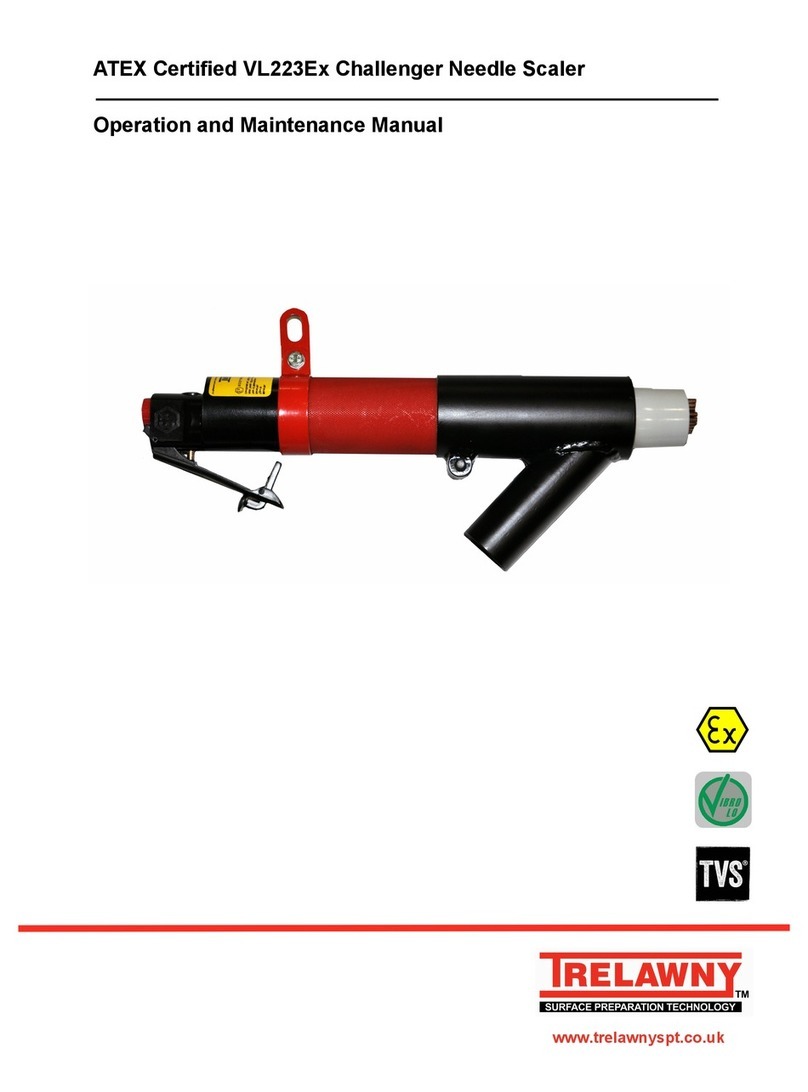
Trelawny
Trelawny VL223EX Series User manual
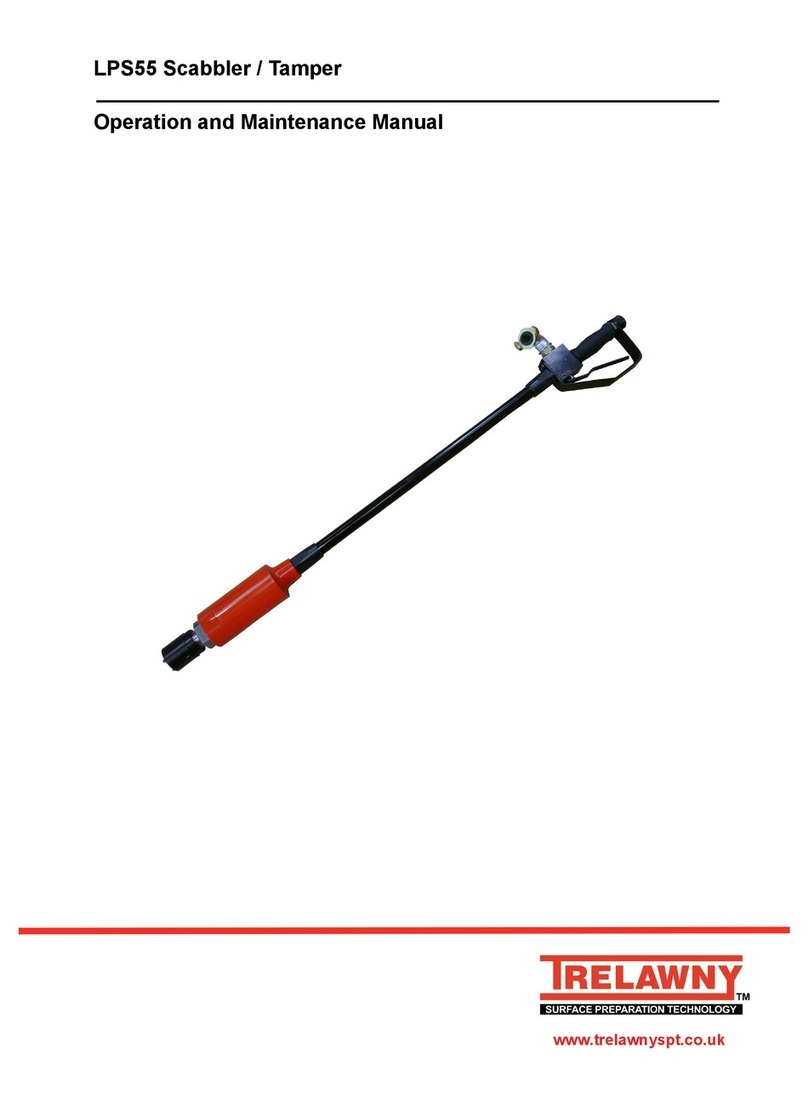
Trelawny
Trelawny LPS55 User manual

Trelawny
Trelawny Single Scaler Standard Duty User manual
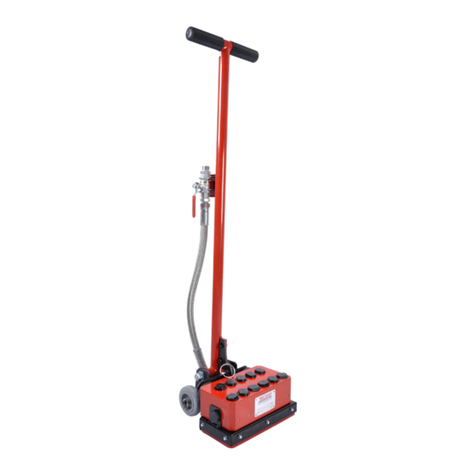
Trelawny
Trelawny SF11EX User manual
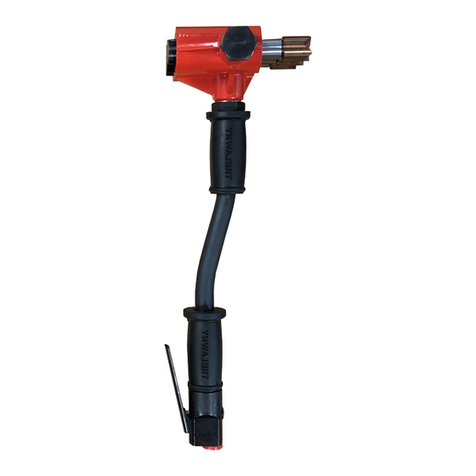
Trelawny
Trelawny SF3EX User manual

Trelawny
Trelawny Vibro Lo Troubleshooting guide
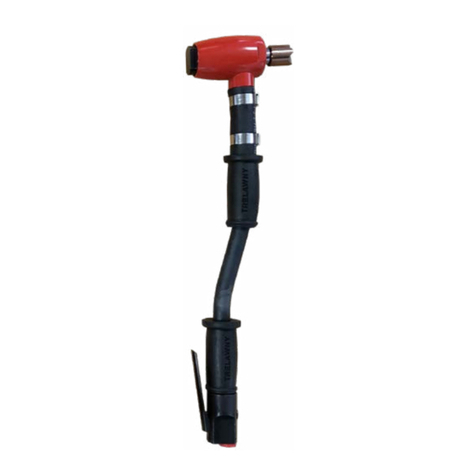
Trelawny
Trelawny VLSF1EX User manual
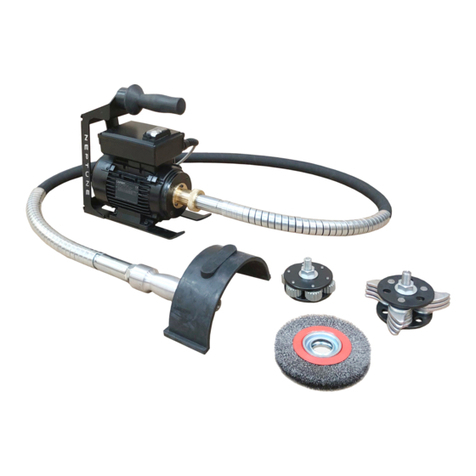
Trelawny
Trelawny Trident Neptune User manual
Popular Tools manuals by other brands
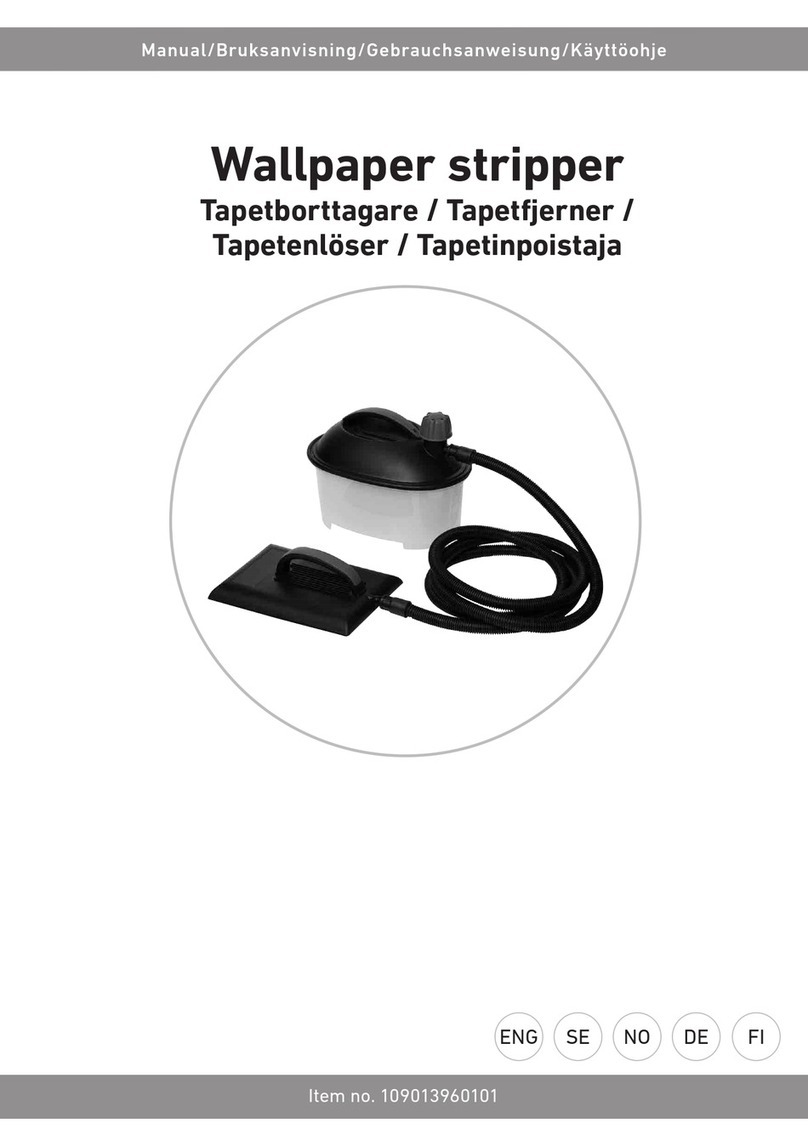
RUSTA
RUSTA 109013960101 manual
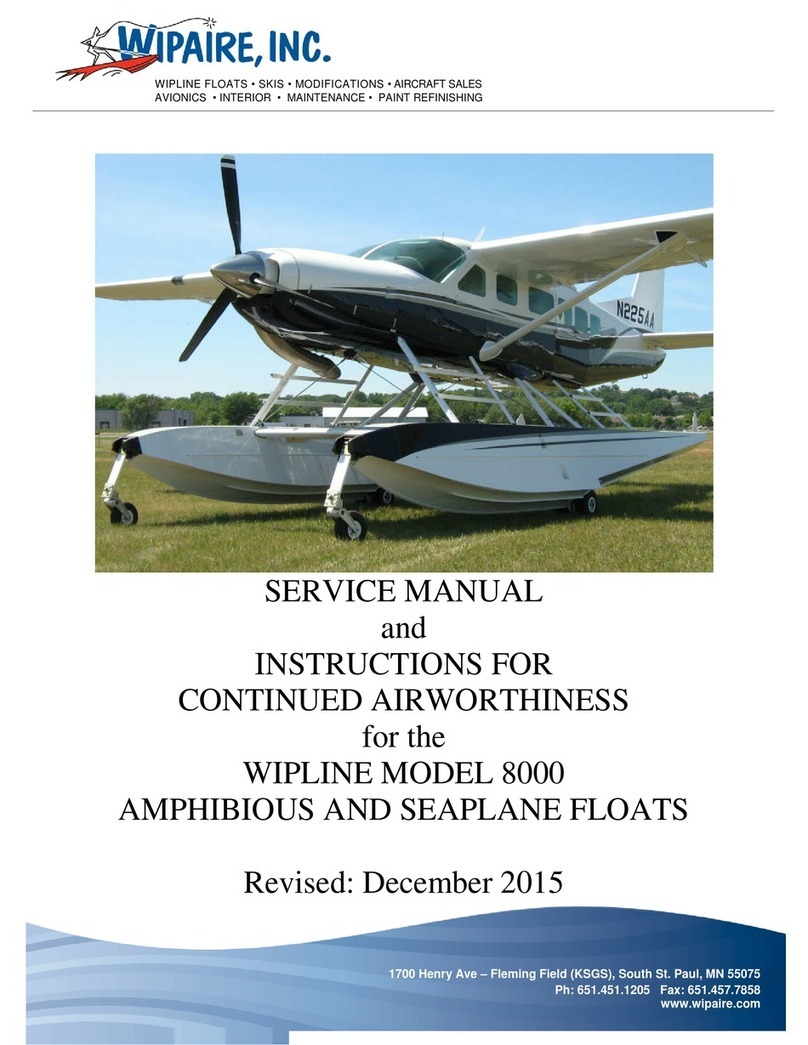
Wipaire
Wipaire WIPLINE 8000 Service manual and instructions
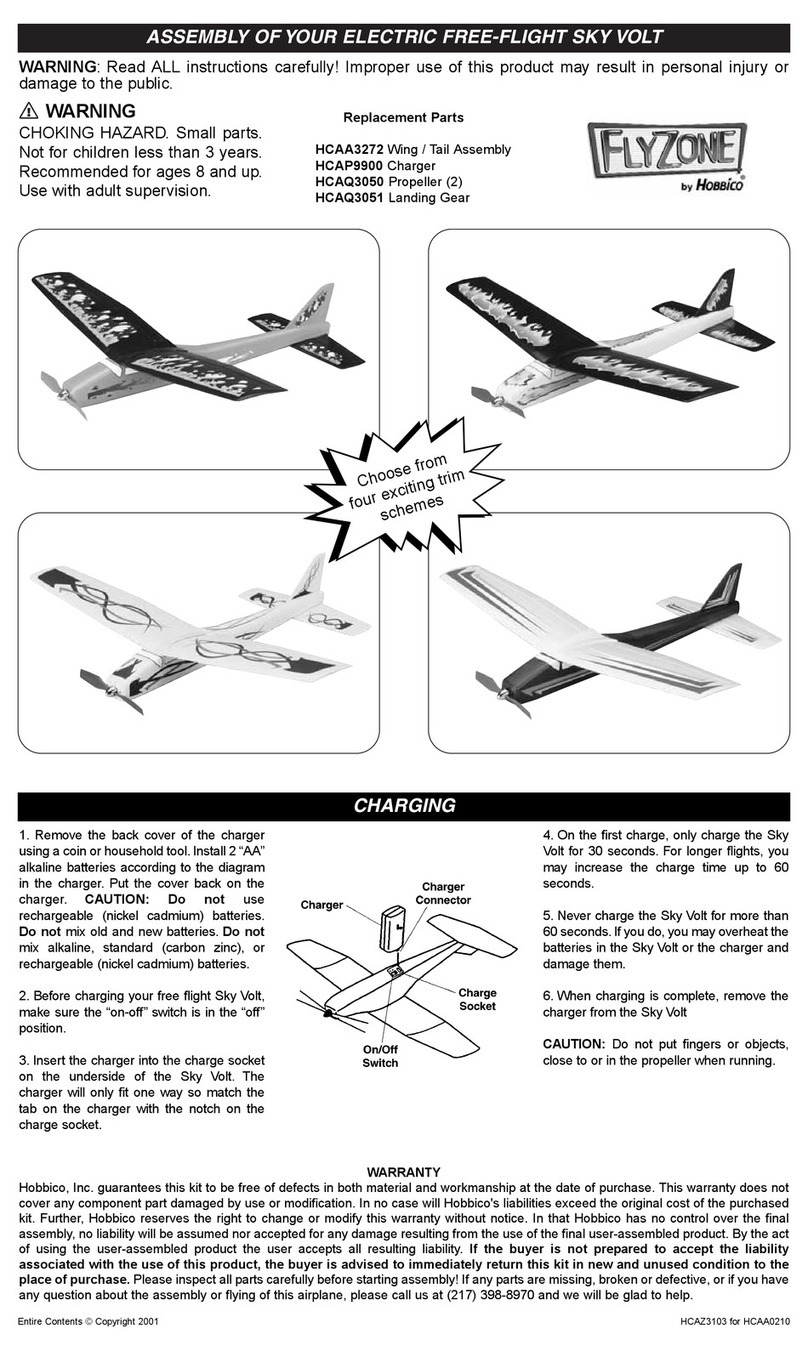
Hobbico
Hobbico FLYZONE SKY VOLT HCAA0210 Assembly
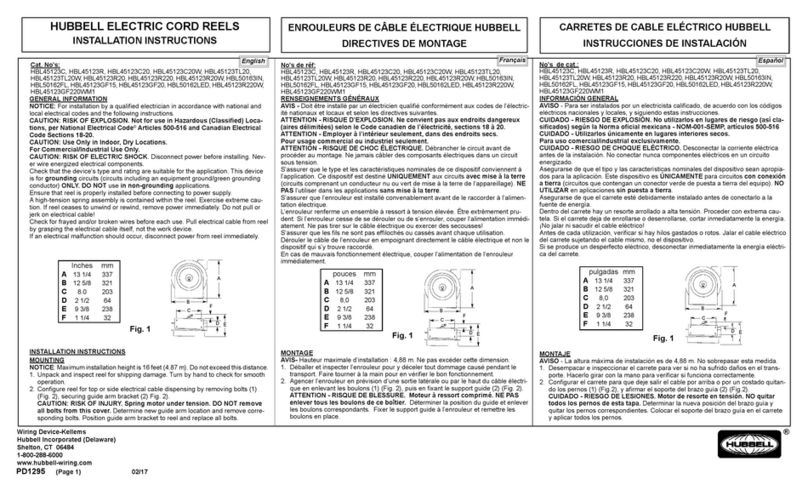
Hubbell
Hubbell HBL45123C installation instructions

Boston Scientific
Boston Scientific EMBLEM S-ICD user manual
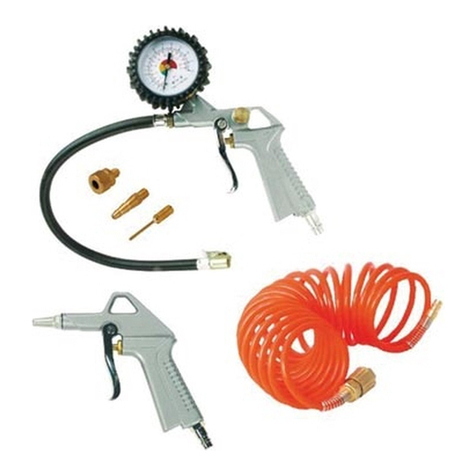
Stanley
Stanley Kit 6 Instruction manual for owner's use
